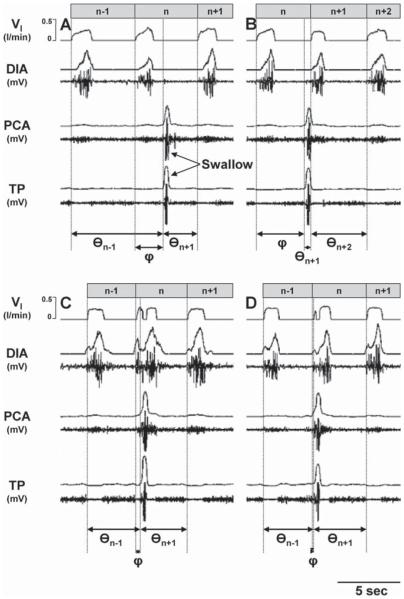Fig. 1.
Depiction of swallow detection and derivation of variables for phase analysis. Swallows were considered solitary if the three breaths preceding (n − 1, n − 2, and n − 3) and the two breaths succeeding (n + 1 and n + 2) the breath of the swallow (n) did not contain swallows. A respiratory cycle was considered to begin with inspiration (I) followed by expiration (E). The n − 3, n − 2, and n + 2 breaths served as control breaths. The vertical line indicates the start of a swallow as evidenced by the raw and moving time average posterior cricoarytenoid (PCA) and thyropharyngeus (TP) muscles signals. Swallows were characterized according to their occurrence within the respiratory cycle as either E, late-E, I, or early-I (Panels A–D, respectively). Old phase (ϕ) was defined as the time from the start of the swallow to the beginning of the n breath. Cophases (θ) were defined as the time from the start of the swallow to the beginning of the preceding breath (θn−1) and three succeeding breaths (θn+1, θn+2, θn+3). Values are normalized as a fraction of control breaths. Panels (A–D) were acquired from the same study in a KFN goat. DIA, diaphragm.

